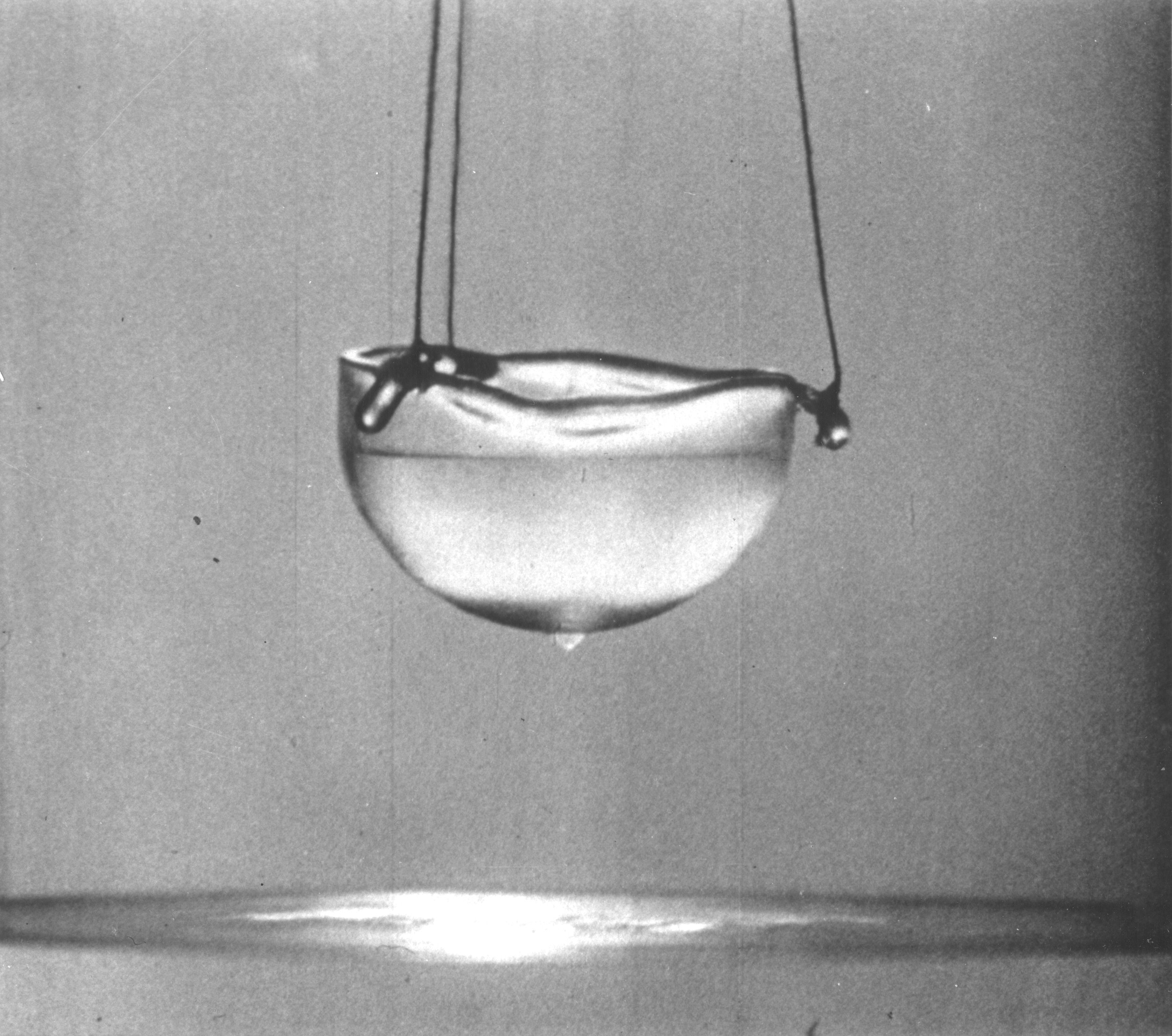Quantum mechanics is very strange and hard to understand. Even today, most of it is merely theoretical, and it behaves much differently than the visible world.
Take quarks, for example. One of the smallest subunits of the things you can see around you are atoms. All atoms have a nucleus, which is composed of protons and neutrons. Protons and neutrons are made of quarks. There are six different types of quarks. They include Up and Down quarks, which protons and neutrons are made of, and also the Strange, Charm, Bottom and Top quarks. The largest type of quarks, Up and Down quarks, are about 10,000 times larger than the smallest type, the Top quark(This can be shown in the zoomable comparison here). The strange thing about this is, that the Top quark is almost 100,000 times as massive! This is an example of a phenomenon of quantum physics that shows that things at that scale greatly differ in behaviour from objects that we can sense. Another phenomenon is that neutrinos coming from the sun change into other types of neutrinos before reaching earth. Most of these phenomena are only theoretical, and cannot be seen or visibly detected, but some of them can.
One of the most remarkable of these phenomena are superfluids. When liquid helium gets lowered to a temperature below -271 degrees Celsius(2.177 degrees above absolute zero), it shows some very strange properties.
Take quarks, for example. One of the smallest subunits of the things you can see around you are atoms. All atoms have a nucleus, which is composed of protons and neutrons. Protons and neutrons are made of quarks. There are six different types of quarks. They include Up and Down quarks, which protons and neutrons are made of, and also the Strange, Charm, Bottom and Top quarks. The largest type of quarks, Up and Down quarks, are about 10,000 times larger than the smallest type, the Top quark(This can be shown in the zoomable comparison here). The strange thing about this is, that the Top quark is almost 100,000 times as massive! This is an example of a phenomenon of quantum physics that shows that things at that scale greatly differ in behaviour from objects that we can sense. Another phenomenon is that neutrinos coming from the sun change into other types of neutrinos before reaching earth. Most of these phenomena are only theoretical, and cannot be seen or visibly detected, but some of them can.
One of the most remarkable of these phenomena are superfluids. When liquid helium gets lowered to a temperature below -271 degrees Celsius(2.177 degrees above absolute zero), it shows some very strange properties.
Superfluid helium has very little viscosity, so it has little friction with its surroundings. If you stir it, it can keep swirling for days. It is possible to detect its viscosity, but when a superfliud flows through very small holes or channels that normal liquid helium cannot go through, it has no measurable viscosity. This leads to the theory that superfluids are actually a mix of pure superfluid and normal liquid.
The theory that superfluids are all partly normal liquid can be tested by the fountain effect. In the fountain effect, a hole filled with a very fine powder is placed in superfliud helium. The superfliud part goes through the hole and into a bulb, but the liquid helium part cannot go through. If the bulb containing 'pure' superfluid is heated, it turns into an ordinary liquid. More superfluid flows into the bulb, in order to keep the balance of the fluids, which increases the pressure. If the bulb has an outlet at the top, the liquid would 'fountain' out, as shown in this video.
Another strange thing about superfliuds is that they have no thermal resistance. If superfluid helium gets heated slightly in one place, the heat would not spread out slowly, but it would travel outward in waves so fast that the heat is instantly distributed. These waves are known as 'second sound'. This also means that when superfliud helium boils, it does not bubble, but evaporates directly from the surface.
Another strange thing about superfliuds is that they have no thermal resistance. If superfluid helium gets heated slightly in one place, the heat would not spread out slowly, but it would travel outward in waves so fast that the heat is instantly distributed. These waves are known as 'second sound'. This also means that when superfliud helium boils, it does not bubble, but evaporates directly from the surface.
If the bottom of a thin tube is placed in water, the water will flow, seemingly against gravity, up the tube via capillary action. This is how plants get water from the roots to the leaves. All liquids do this, but this is limited by their viscosity. Since superfluids have no viscosity, they can creep through small tubes, and even over the walls of containers, and never stop until they become heated and evaporate. This makes superfluids very difficult to contain. If a container of superfluid helium is held above ground, It will seem that the fluid leaks through the bottom of the container, but interestingly, it actually travels up and over the side of the container and drips off at the bottom. It travels over the container as a film of fluid, only 30 nanometers thick, and at a speed of 20 centimeters per second, known as Rollin film. Waves are observed in Rollin film, and they move across these films. These waves are known as 'third sound'.
Some people argue that superfluids are a state of matter, like solids and liquids. It behaves like a liquid in some ways, but like a gas in other ways.
Some people argue that superfluids are a state of matter, like solids and liquids. It behaves like a liquid in some ways, but like a gas in other ways.
Resources:
Wikipedia

